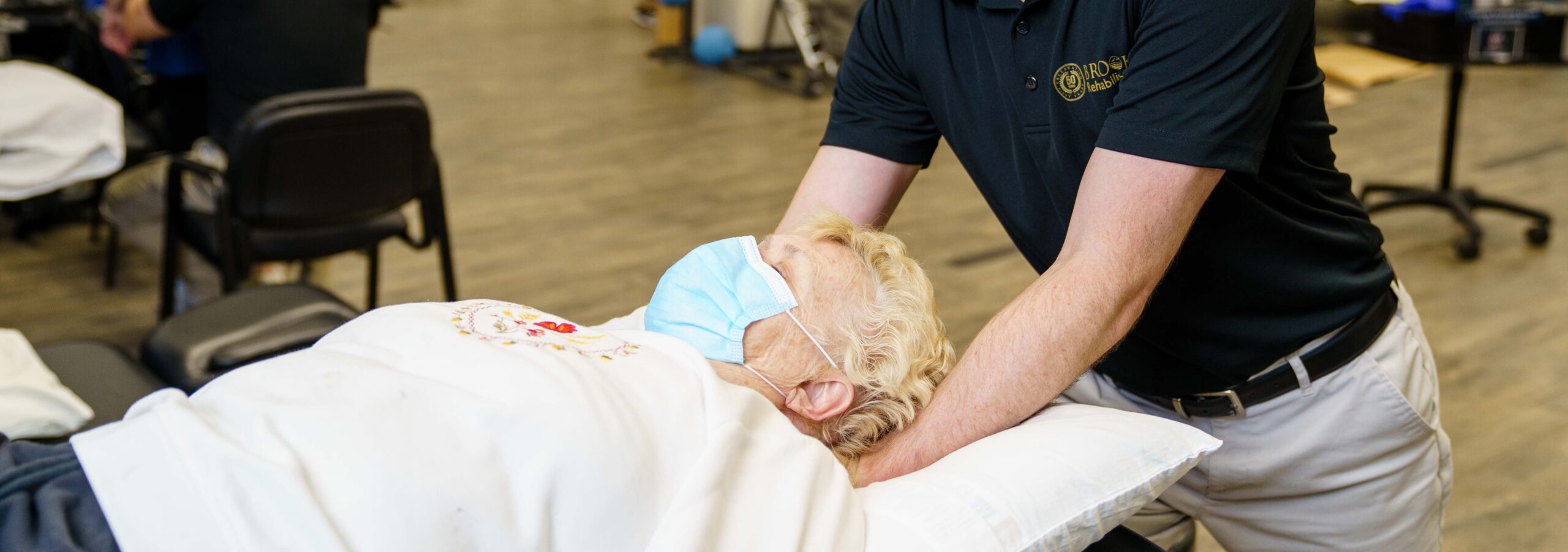What is temporomandibular joint disorder (TMD)?
Temporomandibular joint disorders include a wide range of conditions which affect the jaw and surrounding structures. This includes the joints of the jaw, the disc within the jaw joint, the supporting ligaments, and the muscles around the jaw used for eating and talking.
What causes TMD?
Potential causes of TMD can include trauma to the face or neck and whiplash injuries. Chronic clenching and stress can also contribute to worsening symptoms. Dental work, particularly when the mouth has to be held open for a prolonged period, can also cause increased pain. However, TMD often does not have an identifiable cause, as it can be related to age related arthritis.
What are the symptoms?
- Jaw pain (at the ear or in the muscles)
- Headaches and neck pain
- Jaw clicking or popping
- Jaw locking (opened or closed)
- Pain with talking or eating
- Grinding, particularly at night
- Jaw fatigue when eating
How is it diagnosed?
TMD is diagnosed by either identifying a jaw related cause for the jaw clicking or locking, or by determining that the pain generator is in or around the jaw. However, each case of TMD may look very different from another, and will often need unique, customized treatment to address.
How is it treated?
Therapies
Physical therapy for TMD can include manual therapy treatment and exercises interventions. Manual therapy may include soft tissue mobilization of the surrounding muscles to reduce tightness and pain, as well as gentle joint stretches to improve the mobility of the jaw joint. To retrain and strengthening the jaw, therapists will use a combination or resistance exercises and coordination exercises to allow the jaw to move normally and have the endurance to complete every day activities.
Surgery and other procedures
Dentists or Physicians may prescribe mouth guards to help reduce grinding and improve alignment during the night. In extreme cases, surgery may be needed to correct the alignment of the jaw or replace the joint entirely.
In more extreme cases, surgery may be required. Arthroscopic surgeries are minimally invasive and can help clean up the joint. If the disc requires repair or if there are bone spurs and scar tissue, an Arthroplasty is performed. If the joint has severe damage, a total joint replacement is performed to replace the jaw joint.
What to expect
If you seek treatment for TMD from a physical therapist, your initial evaluation will start with your therapist gathering information about your pain and the history behind your symptoms. They will then perform an examination, including measurements of how you move your jaw, how far you can open your jaw, and where your pain is located. They may also examine the inside of your mouth, using gloved hands to assess the muscles and joints that could be contributing to your symptoms.
During treatment, your therapist will include a combination of hands-on, manual therapy to improve motion and reduce muscle sensitivity, with exercises to improve your jaw and neck strength, endurance, and function to help your symptoms and allow you to return to your previous level.
Finding a physical therapist
We offer physical therapy for temporomandibular joint disorders at the following clinics:
Connect with us
If you would like an evaluation to address your TMD, feel free to reach out to any of the clinics listed above. The clinics will assist in determining if you can schedule an evaluation, or if you will first need a referral from your physician or dentist. If so, they can assist you in obtaining a referral, to accelerate the process of starting your physical therapy.
